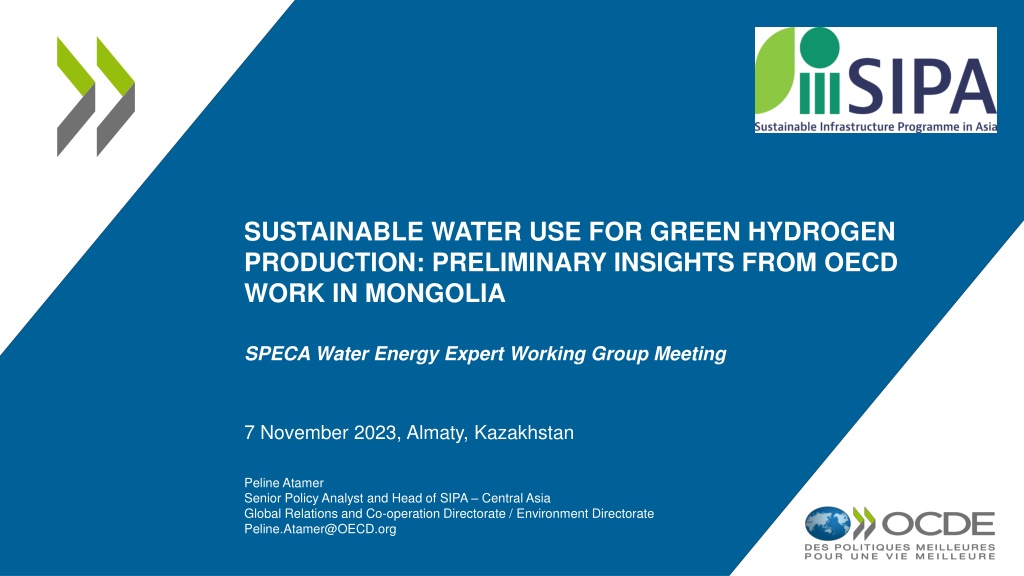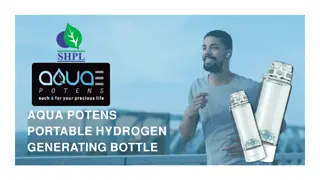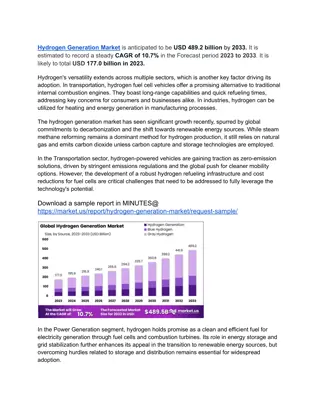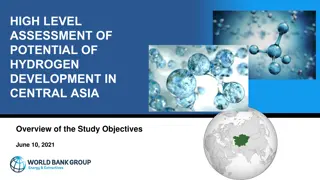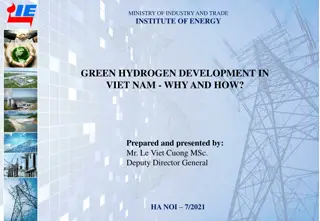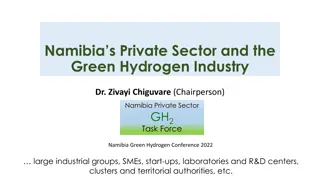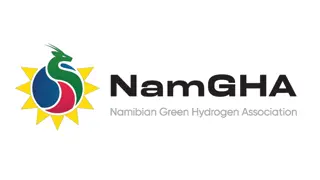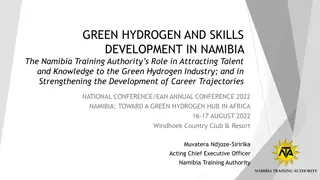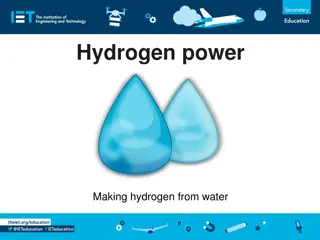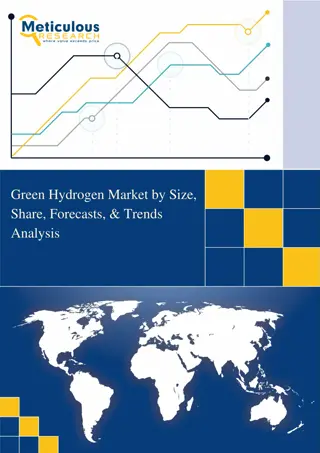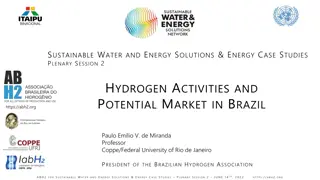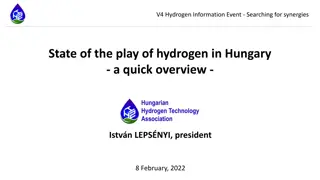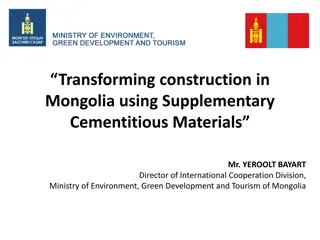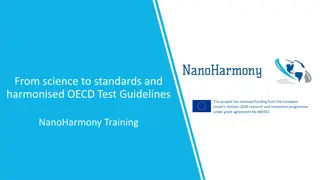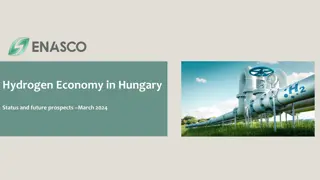SUSTAINABLE WATER USE FOR GREEN HYDROGEN PRODUCTION: PRELIMINARY INSIGHTS FROM OECD WORK IN MONGOLIA
Preliminary insights from OECD work in Mongolia discuss the impact of green hydrogen production on water, sustainable approaches, and possible ways forward. The Sustainable Infrastructure Programme in Asia supports the transition towards net-zero infrastructure with a focus on enabling policies, planning, mobilizing financiers and businesses, and regional peer learning. SIPA's work on renewable hydrogen in Mongolia aims to develop a national strategy and investigate the potential for green hydrogen development, emphasizing water-renewable hydrogen linkages and policy recommendations for a fully-fledged H2 strategy.
Download Presentation

Please find below an Image/Link to download the presentation.
The content on the website is provided AS IS for your information and personal use only. It may not be sold, licensed, or shared on other websites without obtaining consent from the author. Download presentation by click this link. If you encounter any issues during the download, it is possible that the publisher has removed the file from their server.
E N D
Presentation Transcript
SUSTAINABLE WATER USE FOR GREEN HYDROGEN PRODUCTION: PRELIMINARY INSIGHTS FROM OECD WORK IN MONGOLIA SPECA Water Energy Expert Working Group Meeting 7 November 2023, Almaty, Kazakhstan Peline Atamer Senior Policy Analyst and Head of SIPA Central Asia Global Relations and Co-operation Directorate / Environment Directorate Peline.Atamer@OECD.org
Agenda The Sustainable Infrastructure Programme in Asia (SIPA) and the work on hydrogen in Mongolia 1 Impact of green hydrogen production on water: global insights and situation in Mongolia 2 Sustainable approaches: experience from Australia 3 Possible way forward 4
The Sustainable Infrastructure Programme in Asia supports the transition towards net-zero, resilient infrastructure 1 2. ENABLING POLICIES IN ENERGY, TRANSPORT, INDUSTRY Decarbonising strategies Clean energy finance and investment Greening industries 1. PLANNING Long-term strategy Project-level evaluation Implementation partners: Technical assistance, policy dialogues and capacity building in four transformative areas 3. MOBILISING FINANCIERS AND BUSINESSES Sustainable finance principles Due diligence for responsible business conduct 4. REGIONAL AND INTERNATIONAL PEER LEARNING Regional policy network Regional trainings
SIPA work on renewable hydrogen in Mongolia 1 Objectives of the OECD work Context Private-led nascent hydrogen sector in Mongolia Help the government build a vision for a national renewable hydrogen strategy 3 renewable hydrogen projects under development Investigate the potential in Mongolia for green hydrogen development: assets, trends and policy environment 1 low-carbon hydrogen project 1 grey hydrogen project Mongolia s New Recovery Policy refers to hydrogen Carry out an analysis of water-renewable hydrogen linkages in Mongolia According to the NewClimate Institute: production cost could be below $3/Kg by 2030 in Mongolia Identify a set of policy recommendations and roadmap to develop a fully-fledged H2 strategy Project developers looking at export opportunities Renewable hydrogen has a potential to support the decarbonisation of the mining sector, and provide a solution to VRE integration into the electricity grid Launch of the final report in H1 2024 Water is perceived as the #1 challenge
Critical assets for green hydrogen production and availability in Mongolia 1 Availability in Mongolia Land available for the installation of RE infrastructure (PV panels and wind turbines) Land Vast available land Potential for competitive renewable energy production Wind and sun exposure, with a mix of the two preferable for cost competitive green hydrogen production Climatic conditions Very favourable conditions Green hydrogen produced from water electrolysis Water needs to be ultrapure (treatments) Many countries plan to use desalinated seawater Water also needed for cooling Water scarcity and no access to sea ! Water Domestic industry using grey hydrogen (substitution) Presence of domestic industrial clusters with potential for green hydrogen demand (potential for infrastructure mutualisation) Domestic industrial infrastructure Mining industry could be an end-user Due to its low density, hydrogen is comparitively expensive to transport Green hydrogen must answer low carbon footprint criteria Pipelines and sea transport are the most cost competitive Connectivity infrastructure (for export) Landlocked country Low connectivity !
What will be the impact of renewable hydrogen production on water? 2 Main production pathway of low carbon hydrogen w/o CCUS consists of water electrolysis with renewable-powered electricity According to litterature review, water needs for the production of 1 kg of renewable hydrogen range from 20 to 30 L/kg. This amounts to about 1 Bn litres annual vol for 40 MT annual production (one of 2030 clean H2 targets) and 6.2 Bn litres of water for 520 MT green hydrogen (estimated global clean H2 demand in 2050 according to IEA) Conclusion = at the global scale, expected water demand from the green hydrogen sector will be negligible vs global water availability and vs demand from other sectors Combined global water withdrawals for agriculture, industry, and municipalities = 4,000 Bn litres however, local conditions matter. The issue should be framed at a country- and local-level Tonnelli et al. Study: hydrogen demand does not create water scarcity where it is not present (except in Trinidad and Tobago), however, it can exacerbate water scarcity, especially in MENA countries Furthermore, the water issue can be politically / socially sensitive, and can impact social acceptability of technologies and projects Of note: according to available information, additional costs of water transportation and treatment have a negligible impact on renewable hydrogen production costs (~1%), including when relying on seawater desalination (accounting for additional power and infrastructure needs) Sources: desk research, SIPA calculations, Tonelli, D., Rosa, L., Gabrielli, P. et al. Global land and water limits to electrolytic hydrogen production using wind and solar resources. Nat Commun 14, 5532 (2023). https://doi.org/10.1038/s41467-023-41107-x
Some countries planning to become leading renewable hydrogen exporters are exposed to high water stress 2 https://www.wri.org/insights/highest-water-stressed-countries
Situation in Mongolia: water availability in suitable locations for renewable hydrogen production 2 Wind Solar Potential exploitable groundwater resources Most potential for renewable hydrogen development is located in the South Gobi desert, a region with excellent conditions for renewable wind, solar and combined wind + solar energy production, and close to China (market) The region is affected by water scarcity. It relies on groundwater resources, which are depleting Competing demand from 1. the mining sector, 2. agriculture and from 3. household private consumption While awareness of renewable hydrogen technology is very low, the water issue in Mongolia is politically and socially very sensitive Sources: NewClimate Institute, SIPA research
Sustainable approaches: learnings from Australia 3 West Wodonga Water Treatment plant (co-located electrolyser project) Australia is planning to become a leading exporter of renewable hydrogen It has identified the potential of linking water industries and renewable hydrogen production in a circular economy perspective Treated wastewater can be used as a feedstock for renewable hydrogen production The production of renewable hydrogen via electrolysis results in the co-production of O2, which can be re-used for water treatment Co-location of energy and hydrogen production, wastewater treatment, transport infrastructure and other relevant activities (industry, urban activity) offer substantial potential economic benefits (agglomeration economies) logic of hubs Sources: Government of Australia, Water Services Association of Australia, desk research
Possible way forward 4 Preliminary Information and data collection is needed from projects to understand better water- hydrogen linkages (e.g. efficiency/consumption, sustainability of associated infrastructure and logistics, impact on costs on entire project cycles) Peer-to-peer learning and transferability of experience: countries like Australia and Spain can share the experience of their public sectors (e.g. supporting hubs ) Knowledge- building Sustainability aspects of renewable hydrogen projects will need to be managed, and evaluation and monitoring frameworks (e.g. Strategic and Environmental Impact Assessments) will need to include a water component International standards being developed for trade certification should cover water aspects Adapt hydrogen frameworks and standards In countries planning to develop and scale-up renewable hydrogen production, water governance frameworks and policies should integrate this new sector Address political and social sensitivities: inclusive dialogue, clear and transparent information, and trust-building across stakeholders will be essential Involve water institutions in renewable hydrogen dvpt
Thank you! peline.atamer@oecd.org
Example of a renewable H2 project under development in the South Gobi desert water requirements and impact 2 Like all identified projects, co-location of off-grid, dedicated renewable electricity production infrastructure and electrolyser The Project anticipates meeting its water demand from two groundwater aquifers: - A first one located 52km from the wind farm site. It covers an area of 256 km2, has a volume of saline water equal to 22 10^6 m3, and a potential production of 22,982 m3 per day - The second one located 53km from the wind farm site. It covers an area of 1,070 km2, has a volume of 167 10^6 m3 of saline water, and a potential production of 64,904 m3 per day The project estimates that 1 Kg of H2will require 12 litres of ionized water, i.e. 120,000 m3 of water per year for 10 MT (maturity stage), = one well producing 335 KL / day, = 0.5% of the daily production capacity of the second aquifer As a point of comparison, the competing water demands from major mines in the South Gobi Region in 2010: Oyu Tolgoi (67,000 m3/day), Tsagaan Suvarga (32,000 m3/day), and Tavan Tolgoi (76,000 m3/day). However, water recycling = 80% The project anticipates that the additional costs involved in pumping, desalinating and transporting water for the production of hydrogen would add 1% to the levelised cost of production The project has also made clear that the site would not draw on publicly funded water infrastructure projects whose aim is to increase quality water supply to other non-industrial users, preferring instead to secure its own needs and invest privately in the required infrastructure Source: SIPA research
Sustainable approaches: renewable hydrogen produced from recycled wastewater in Andalusia 3 Andalusian Green Valley overview Recycled wastewater usage in the Valley Operated by Spanish energy company Cepsa CEPSA has reached an agreement with the public company Aguas y Servicios del Campo de Gibraltar (Arcgisa) to use recycled water (non-drinkable) from the region s future wastewater treatment plant in its industrial facilities Largest project announced so far in Europe, representing an investment of 3 bn euro Two new plants with total capacity of 2 GW producing up to 300MT of green hydrogen in Campo de Gibraltar (C diz) and Palos de la Frontera (Huelva) operations to start respectively in 2027 and 2026 4.2 million cubic meters of water will be re-used and processed annually instead of being dumped into the sea In addition, will see largest green ammonia plant in Europe with a production capacity of up to 750,000 tons per year. 1 bn euro investment, operational in 2027 The San Roque Energy Park s new water treatment plant will recycle up to 20% of industrial facilities water for reuse next year as part of its water reduction efforts Sale of 60% of green hydrogen production by 2030 is already committed Part of Cepsa s transformation plan which aims to reduce freshwater collection in water-stressed areas by 20% globally by 2025 compared to 2019 10,000 jobs expected to be created (direct and indirect) https://www.cepsa.com/en/press/cepsa-to-produce-green-hydrogen-with-recycled-wastewater
